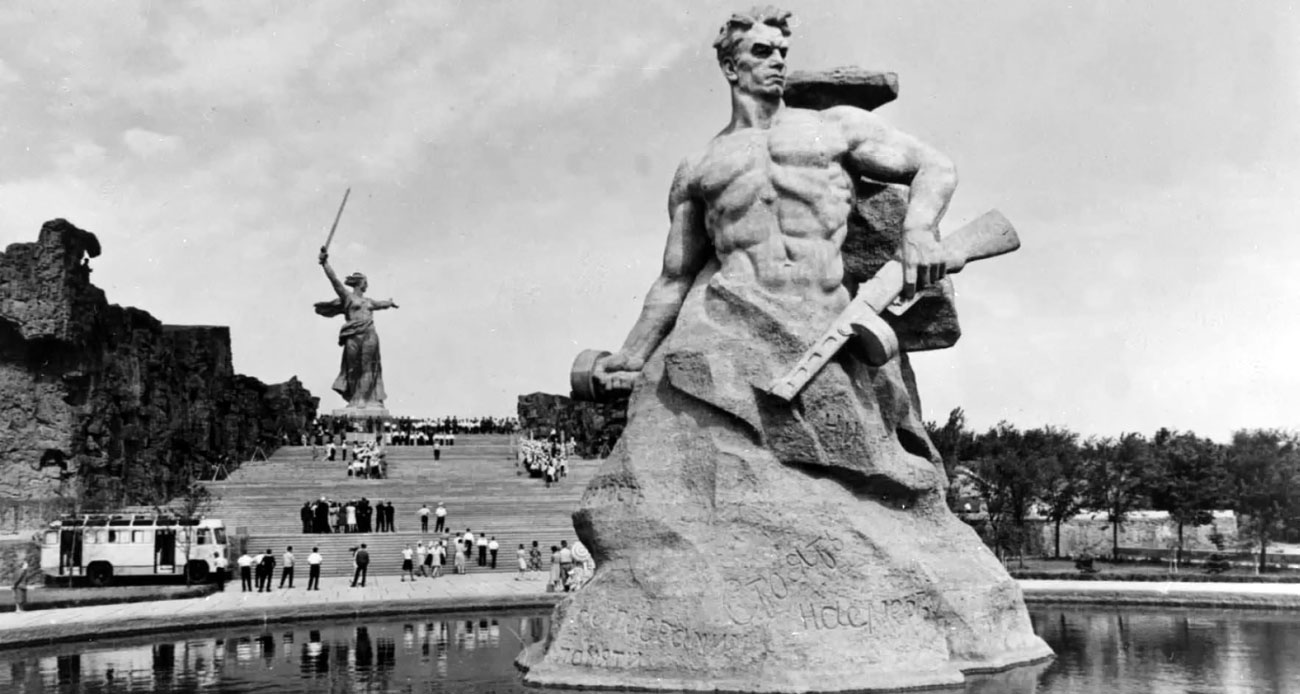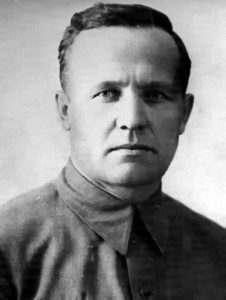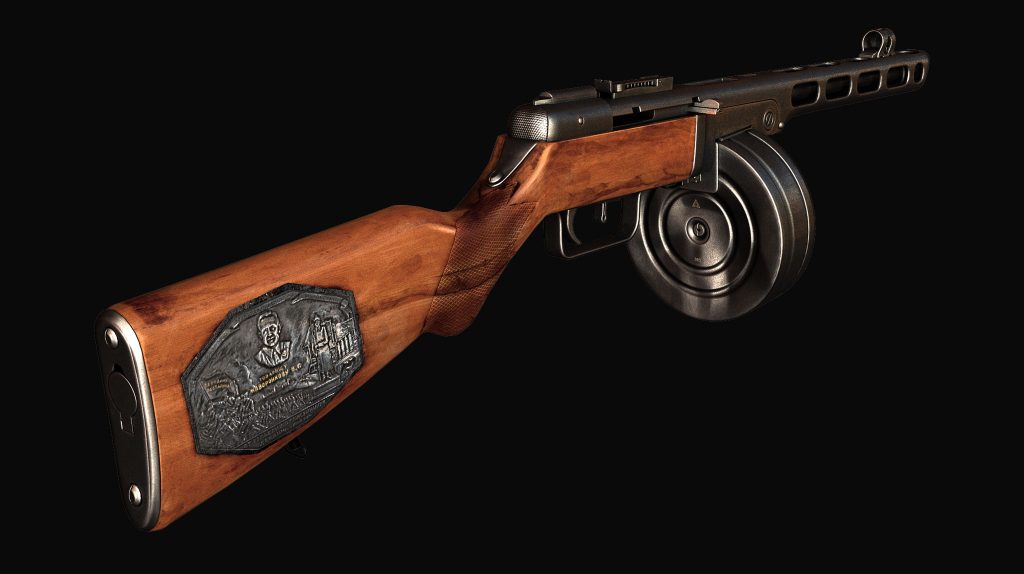
Shpagin submachine gun (PPSh-41) – legendary weapon of Victory
Shpagin submachine gun
Specifications
Caliber 7.62 mm, barrel length 27 cm, total length 84.2 cm, 4 right-hand grooves, drum magazine capacity – 71 rounds or box magazine capacity – 35 rounds. Weapon weight with drum magazine – 5.44 kg, with box magazine — 4.3 kg. It shoots at a rate of 600-700 shots per minute with the muzzle velocity of 500 meters per second. Ammunition: cartridge type 7.62х25 ТТ.
История
The submachine gun is a fully automatic small weapon, which uses a pistol cartridge.
The exhibit used for the model is displayed at the Tula State Arms Museum.
The model was transferred to the Museum in 1966 by Vasily Gavrilovich Zhavoronkov -Chairman of the Tula Municipal Committee of Defense.
For submachine gun configuration see the model. You can see the walnut gunstock, stock swivel below the butt stock, inlay gold elements and commemorative plate with embossed portrait of Vasily Gavrilovich Zhavoronkov, ribbed elements on the butt stock neck, a bolt assembly, a barrel sight, and a fore-sight with a cover.
PPSh automatic principle operated due to open-bolt blowback action. A flag fire-control lever, i.e. safety latch, allowed switching between firing of single shots and bursts. The case was removed by the ejector mounted in the breechblock, and a stationary rigid deflector fixed to the bottom of the return-spring housing. Shooter hands were protected against overheating during shooting by an egg-shaped holes in the housing for better ventilation and cooling.

On 12 February 1942, the box magazine for 35 rounds was adopted in the Shpagin submachine gun design. This decision was caused by the drawbacks of drum magazine revealed during war.
Both magazine types had their advantages and drawbacks.
The model shows the components of the drum magazine: the body, rounds, helix, drum, cover and latch.
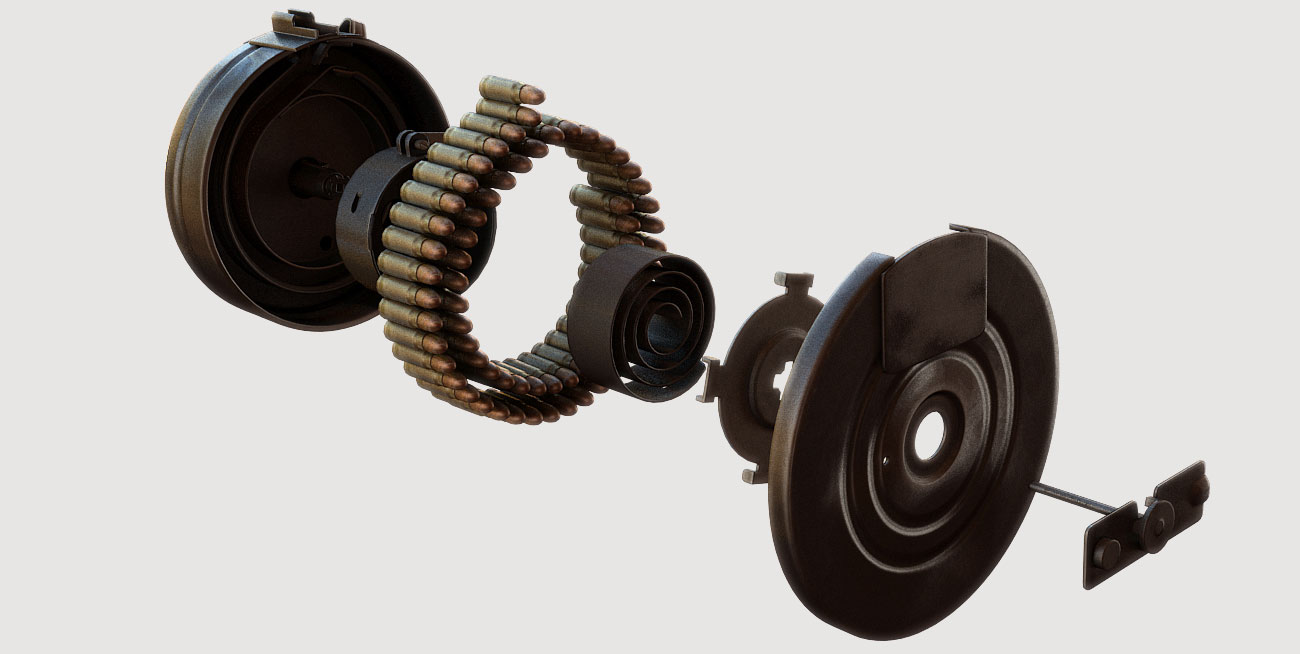
History of the specimen
The submachine guns appeared during the WWI as weapons characterized by small dimensions and intended to conduct maneuver warfare.

Development
In the USSR, the development of submachine guns as secondary weapons began in the mid-1920s. Fedor V. Tokarev is ascribed the merit of creating the first Soviet-made submachine gun. In 1927, he proposed a prototype for caliber 7.62 mm revolver cartridge.
Later on, Sergey A. Korovin and Boris G. Shpitalny in Tula, and Vasily A. Degtyaryov in Kovrov got engaged in the creation of the submachine guns to fit the TT pistol. His submachine gun was accepted into service with the Red Army in 1934, however, in 1939 they were discontinued both in terms of production and service, removed from the troops and forwarded to warehouses for storage.
The need
The value of this weapon was fully perceived during the hostilities of the Soviet-Finnish war in 1939-1940. Suomi submachine guns that were used by the Finnish soldiers proved to be a rather powerful melee weapon, especially in forested and rough terrains.

Therefore, the Chief Military Council of the USSR decided to return the Degtyaryov 1934/38 model to the troops. In late February 1940, the Red Army received his upgraded prototype distinguished by the modified magazine and gunstock.
In early 1940, Georgy S. Shpagin gained an assignment for the development of a new weapon.
Georgy S. Shpagin commented on his invention:
“I set a goal that the new automatic weapon must be extremely easy and simple to manufacture. I thought, if to comprehensively provide the whole huge Red Army with automatic guns, and to make attempts to use a complex and labor-intensive technology previously adopted, what an incredible number of shop-floor machines should operate at their maximum performance and what a great number of people should be engaged in operating such production machines. This was how the idea about the pressed and welded configuration occurred to me”.
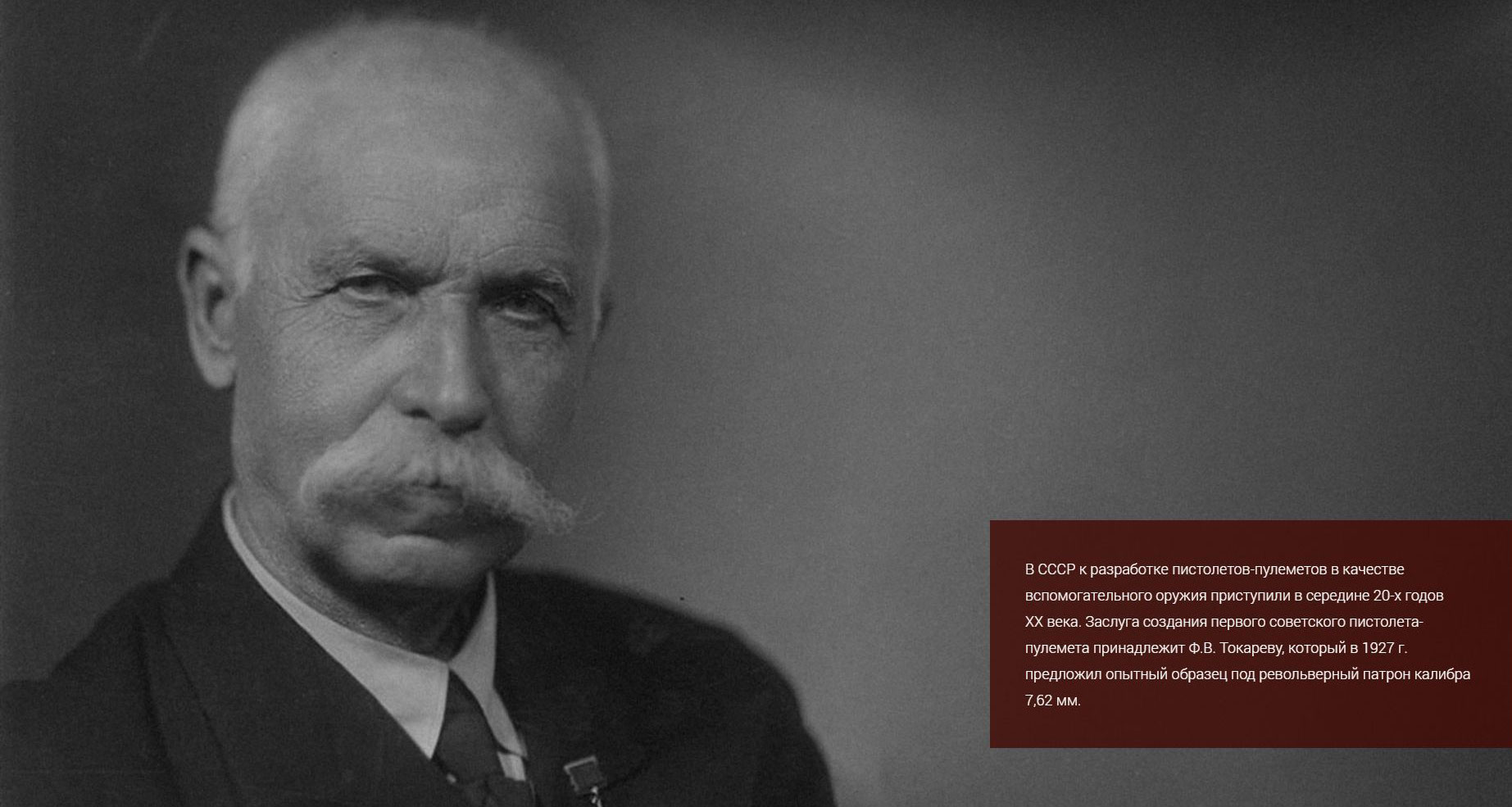
Why was it possible to curtail the cost and simplify the manufacture versus the previously used process? The main advantage of the Shpagin submachine gun in wartime conditions was the ease of parts’ machining and availability for mass production without the use of alloy steels and complex tooling. Due to the above factors, its manufacture was established on a large number of enterprises that had no special equipment to produce weapons.
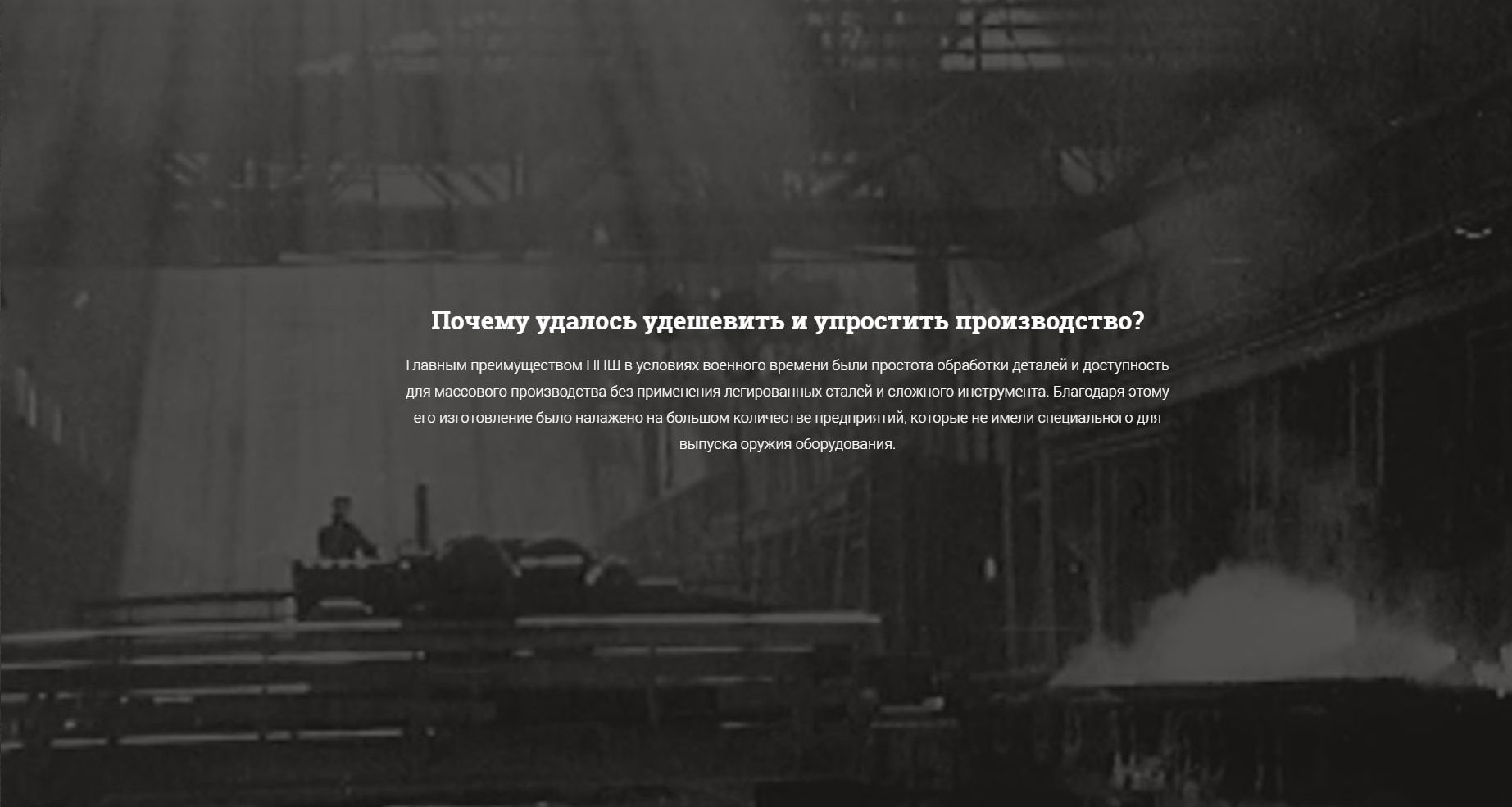
Use
At the very beginning of the Great Patriotic War, the Red Army encountered an acute shortage of submachine guns. The situation was so critical that those weapons were allocated by Stalin personally.
Soon, however, many enterprises deployed mass production of this weapon, and in 1942 the USSR defense industry produced about half a million of submachine guns, thus 16 times exceeding the output of 1941. Overall, some 5.4 million units of the weapon was manufactured during the war and Shpagin submachine gun became one of the mass-produced weapons.
The captured PPShs were popular among the German soldiers due to the large capacity magazine. In 1943-1944, more than 10,000 Shpagin submachine guns were refurbished to fit the Parabellum German pistol cartridge.
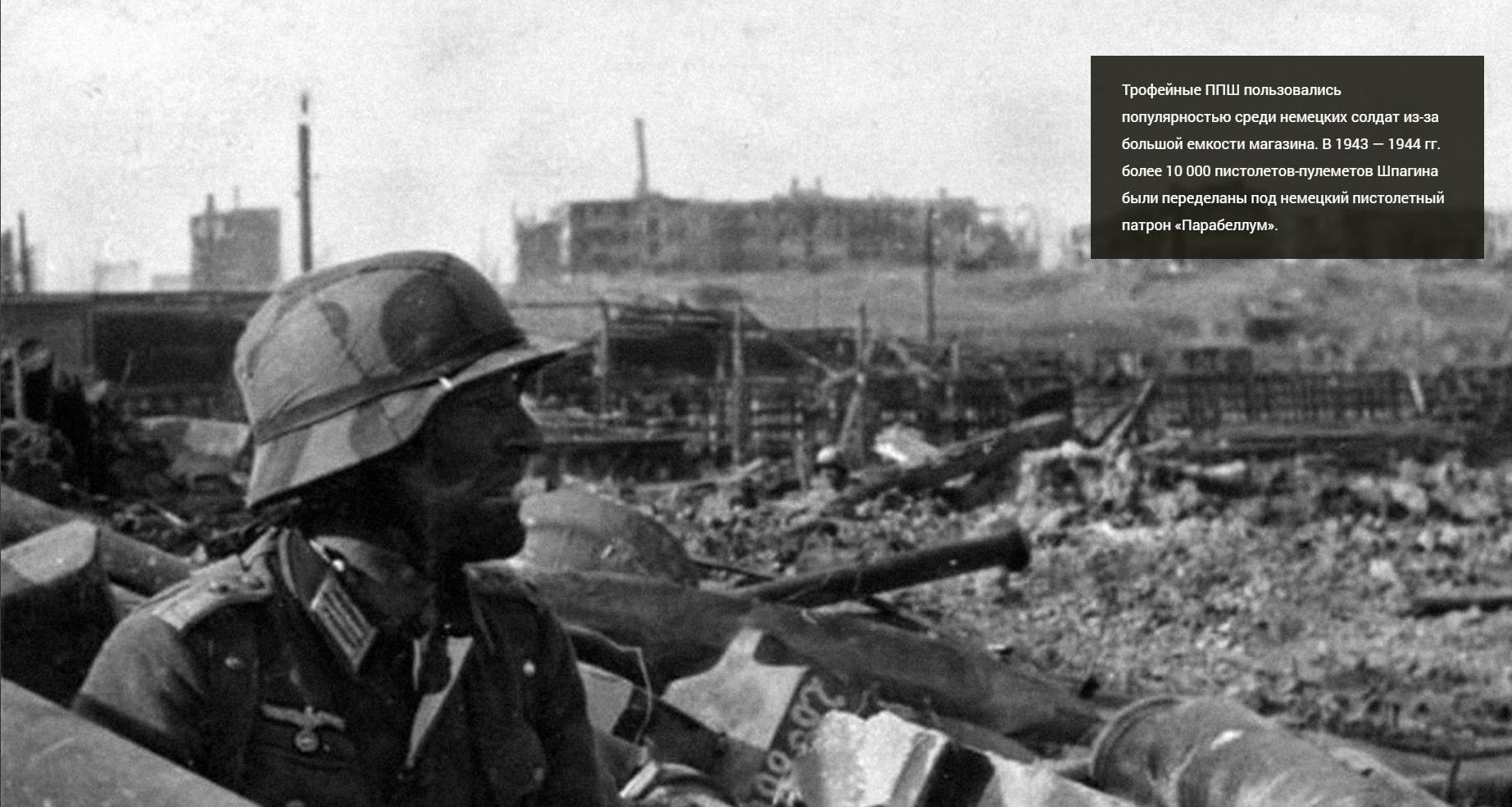
David N. Bolotin wrote in the “History of the Soviet small arms” book:
“The vitality of Shpagin’s designed prototype was tested by firing 30,000 shots, after which the PPSh showed satisfactory accuracy of fire and good condition of parts. The reliability of the automation was tested by firing at angles of elevation and declination of 85 degrees, with artificially dusted mechanism, in the absence of lubrication (all parts were washed with kerosene and wiped dry with rags), with 5,000 rounds shooting without weapon cleaning. All this proves the exceptional reliability and faultless functioning of the weapon along with high combat qualities”.
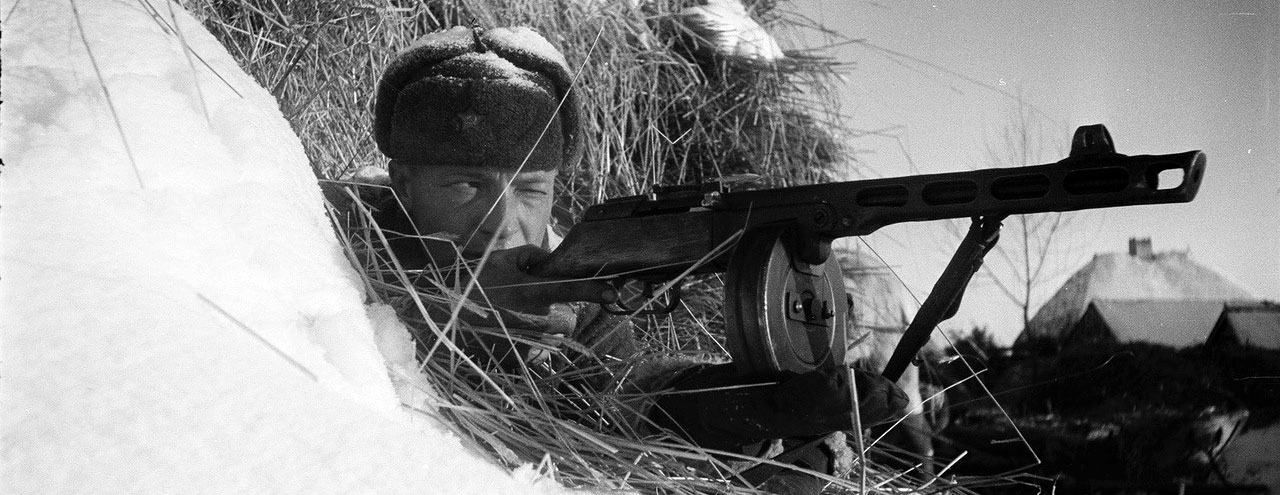
Feedback by soldiers
Former miner Nikolai Posylaev who went through the whole war once narrated:
“PPSh was good in all ways, much better than the German Schmeisser, but it weighted too much – 6.5 kilos. I still have the right shoulder, which carried the submachine weapon, slightly below the left one”.
Yakov F. Pavlov, hero of the Soviet Union, expressed his opinion about the Shpagin submachine gun as follows:
“This short name of a dangerous weapon is familiar and close to everyone who had a chance to defend the honor and independence of our Fatherland with a gun in hand during the war”
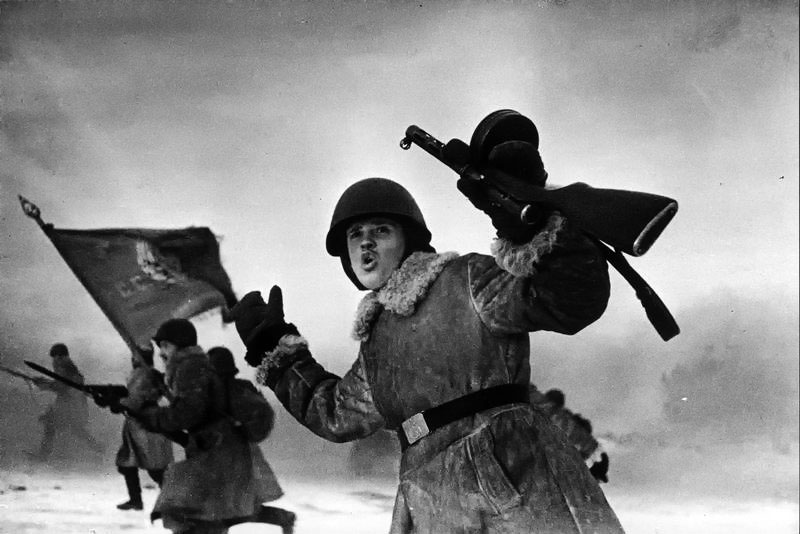
Shpagin submachine gun became an integral part of the iconic image of a Soviet liberating soldier. It is immortalized in the monuments to Soviet soldiers. The photo captures a memorial on Mamayev Kurgan in the Hero City of Volgograd. PPSh can be also found on stamps, and even held in the hands of toy soldiers. Folklore mentions it in chastushkas and songs:
“As soon as I have sighted my PPSh
Enemy`s soul is gone away”
“I found my friend at the front,
His name is simple – PPSh.
I go with him in the snowstorm and blizzard,
And my soul is easy living with him”.
During the Great Patriotic War, the Shpagin submachine gun became the most loyal comrade.
